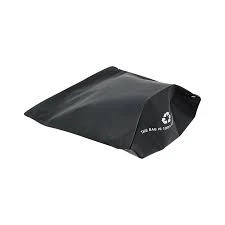- Afrikaans
- Albanian
- Amharic
- Arabic
- Armenian
- Azerbaijani
- Basque
- Belarusian
- Bengali
- Bosnian
- Bulgarian
- Catalan
- Cebuano
- chinese_simplified
- chinese_traditional
- Corsican
- Croatian
- Czech
- Danish
- Dutch
- English
- Esperanto
- Estonian
- Finnish
- French
- Frisian
- Galician
- Georgian
- German
- Greek
- Gujarati
- haitian_creole
- hausa
- hawaiian
- Hebrew
- Hindi
- Miao
- Hungarian
- Icelandic
- igbo
- Indonesian
- irish
- Italian
- Japanese
- Javanese
- Kannada
- kazakh
- Khmer
- Rwandese
- Korean
- Kurdish
- Kyrgyz
- Lao
- Latin
- Latvian
- Lithuanian
- Luxembourgish
- Macedonian
- Malgashi
- Malay
- Malayalam
- Maltese
- Maori
- Marathi
- Mongolian
- Myanmar
- Nepali
- Norwegian
- Norwegian
- Occitan
- Pashto
- Persian
- Polish
- Portuguese
- Punjabi
- Romanian
- Russian
- Samoan
- scottish-gaelic
- Serbian
- Sesotho
- Shona
- Sindhi
- Sinhala
- Slovak
- Slovenian
- Somali
- Spanish
- Sundanese
- Swahili
- Swedish
- Tagalog
- Tajik
- Tamil
- Tatar
- Telugu
- Thai
- Turkish
- Turkmen
- Ukrainian
- Urdu
- Uighur
- Uzbek
- Vietnamese
- Welsh
- Bantu
- Yiddish
- Yoruba
- Zulu
thickness of sheet of paper
The Thickness of a Sheet of Paper An Exploration
Paper is one of the most ubiquitous materials in our daily lives. From books and newspapers to packaging and stationery, it serves a myriad of purposes. One of the fundamental characteristics of paper that directly affects its functionality and application is its thickness. The thickness of a sheet of paper, often measured in microns or millimeters, plays a crucial role in determining its quality, durability, and suitability for various tasks.
Understanding Paper Thickness
Paper thickness is a measure of how thick a sheet of paper is. It impacts everything from the paper’s strength and opacity to its texture and ability to accept ink. The thickness of paper can vary widely based on the type of paper and its intended use. For instance, standard printer paper typically has a thickness of about 75-100 microns (0.075-0.1 mm), while thicker card stock, used for business cards or postcards, can reach 300 microns (0.3 mm) or more.
To put this into perspective, a typical sheet of paper might have a thickness equivalent to about 0.1 millimeters. This seemingly small measurement is crucial in various contexts. For example, if you're printing double-sided documents, thicker paper can prevent ink from bleeding through, enhancing readability and presentation.
Factors Influencing Paper Thickness
The thickness of paper is influenced by several factors during its manufacturing process. The type of fibers used (such as wood pulp, recycled paper, or cotton), the amount of filler material added, and the paper's intended use all play significant roles in determining its thickness.
1. Fiber Type Different types of fibers result in differing paper densities. For instance, papers made from cotton fibers tend to be thicker and more durable compared to those made solely from wood pulp.
2. Additives Manufacturers often add fillers like kaolin clay, calcium carbonate, or titanium dioxide to improve the paper’s printing properties and texture. While these additives can enhance quality, they can also affect the thickness.
thickness of sheet of paper

3. Production Techniques The papermaking process itself can influence thickness. For instance, pressing and drying techniques can change how fibers bond and, subsequently, how thick the final product is.
The Role of Thickness in Application
The thickness of paper is not merely a technical specification; it bears significant relevance in practical applications. Different tasks require different thicknesses for optimal performance.
- Writing and Printing For day-to-day use, such as printing documents or taking notes, a thickness of around 80-90 microns is generally preferred. This thickness provides a good balance between durability and smooth writing/printing surfaces.
- Art and Craft Projects In creative fields, artists may opt for thicker, textured papers that allow for better ink absorption and artistic effects. Watercolor papers, for example, can range from 200 to 800 microns, depending on the intended technique.
- Packaging For packaging materials, paper thickness is critical for protection and durability. Thicker papers ensure that products are securely protected during transport and handling.
- Specialty Uses Certain industries require paper with specific thicknesses for unique applications. For example, medical or laboratory settings might need thicker papers that resist tearing or that are designed to withstand certain chemical substances.
Conclusion
The thickness of a sheet of paper plays an integral role in its overall functionality and application. As we’ve explored, it impacts a paper’s strength, texture, and application across various fields, from art to packaging to everyday writing. Understanding the nuances of paper thickness not only enhances our ability to choose the right type for our needs but also highlights the intricate balance art and science play in the world of paper manufacturing. Whether you’re printing a document or creating an artistic masterpiece, being aware of paper thickness can ensure that your final product meets your expectations and requirements. Next time you pick up a piece of paper, consider the layers of complexity that lie within that seemingly simple sheet.













